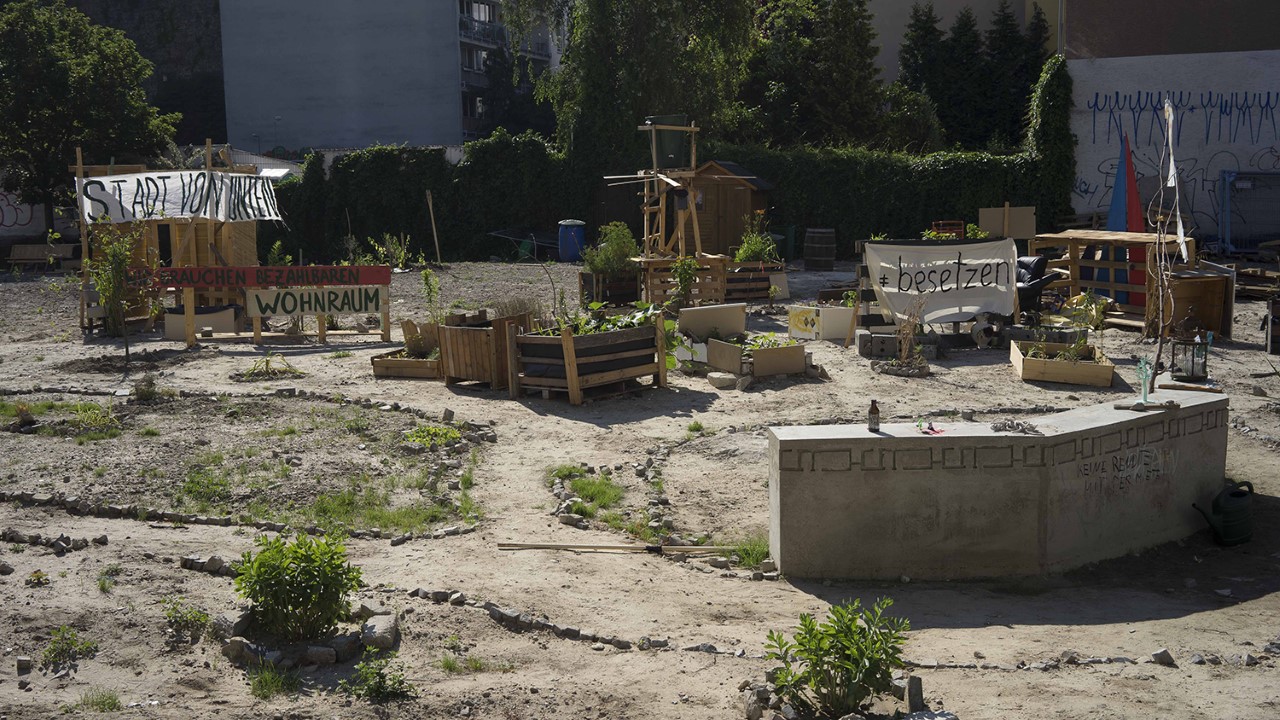Beyond Toxic Autonomy

In 2013, in the face of the touristification of Berlin's subculture, the deregulation of art funding structures, and the resulting perceived 'functionalisation' of art, the coalition of artists and art workers Haben und Brauchen discussed making a concerted plea for art as “an autonomous space that is not defined, that belongs to everyone” (1). In ensuing debates in the visual arts, the definition of the project space, and with it, artistic practices within the field of the independent scene, were aligned with an idealised 'third space' held to be separate from both the institutional landscape and the art market (2). Hovering at the margins of such working definitions is a curious, wishful logic: if only this privileged 'third space' could be properly secured, perhaps independent artists, art workers and project spaces might finally be 'safe'.
This 'third space' in fact teeters on minimum amounts of public and private money, and maximum amounts of unpaid work. It is additionally highly reliant on monetarily free or cheap access to space. In a city where real estate values continue to shoot upwards, this is hard to come by without a catch: developers have long twigged that art can be instrumentalised to generate curiosity about a new project, to make an area attractive to higher-paying renters, and to distract from displacement and eviction (3).
Meanwhile, while insisting on art as an undefined, autonomous entity may have (legitimately) helped to secure stakes on a cultural-political level, it also seems, internally, to have sedimented an artificial separation held between the art field and the fabric of the city (4). There is ample evidence of art's active role in the valorisation of urban space in other cities now experiencing the later stages of gentrification (5). In Berlin, though, a blindspot seems to persist regarding art's instrumentalisation as a 'pioneer' of urban development (6) – that neoliberal imperative otherwise known as gentrification. Relational links between art and gentrification – attendant processes of exacerbated racialisation and segregation are rarely discussed in the public sphere (7) – are still often made only after the moment of eviction, at which point art suddenly becomes one of gentrification's loudest, most visible victims.
Art is a part of the fabric of the city, but it is up to artists and art workers to work towards determining what precise role it plays. What happens when they realise the white walls they built often turn out to be parking schemes for post-crisis investment? What happens when the walls begin to implode, or are demolished? Suddenly exposed, perplexed, blinking anxiously across the expanded field of view, artists and art workers are pushed to actively choose other dependencies, reaching out to one another and (if they are lucky to find any remaining whisper of trust there) to urban-activist networks already working hard to counteract the rise and rise in rents. It may be that in future, sensitively chosen, carefully defined dependencies (8) will form the basis for an autonomy of a different, more humble shape.
__________
References:
(1) Haben und Brauchen, On Art Terms between Autonomy and Functionalisation, 2014, p. 12.
(2) See for example Neue Berliner Räume, On the End of the Project Space, 2015.
(3) See for example Julia Lorenz, 'Wenn sich Investoren anrobben', taz, 09.09.2018; Heiko Pfreundt, 'Nach uns die Verdrängung', Arts of the Working Class Magazine, Issue #3.
(4) In 'Infrastructures of Autonomy on the Professional Frontier: Art and the Boycott as/of Art', Rachel O'Reilly and Danny Butt draw on Marina Vishmidt to flesh out the instrumentality of art's apparent autonomy, locating it in a universalised model of bourgeois subjectivity that is “instrumental in its non-instrumentality, purposeful in its purposelessness.” – in Journal of Aesthetics and Protest, Issue 10, 2017.
(5) See for example Rosalind Deutsche, 1996; Neil Smith, 1996; Zanny Begg & Keg de Souza, 2009; Stephen Pritchard, 2016; or the Bhaaad website: http://alianzacontraartwashing.org/en/bhaaad/
(6) Senatsverwaltung für Stadtentwicklung, Urban Pioneers: Stadtentwicklung durch Zwischennutzung, Berlin: Jovis, 2007.
(7) Jin Haritaworn, 'Über die (Un-)Möglichkeit, die Beziehung zwischen Kolonialität, Urbanität und Sexualität zu thematisieren', sub/urban. zeitschrift für kritische stadtforschung, 2015, Band 3, Heft 1, S. 111-118.
(8) Or: autonomy defined as “selbst-gewählte Abhängigkeiten”, see Bini Adamzak, Beziehungsweise Revolution, Suhrkamp Verlag, 2017
Photo description:
On a piece of land slated for development into 'luxury micro-living apartments' on Braunschweiger Str. in Neukölln, two artists, Sabrina Brückner and Alison Darby, installed a concrete bench-like form and invited the neighbourhood to come by. Almost spontaneously, a community meeting-place and garden took shape and flourished for several weeks. On June 25, 2019, the garden was cleared and the community forced to leave by police - for now. Photo: DaWoEdekaMaWa
Text by:
Sonja Hornung is a visual artist who grew up and studied in Melbourne, Australia. In her artistic practice, which moves between installation, performance, and drawing, she often attempts to insert emancipated forms into pre-existing orders. She is an active member of the artist-activist group Kunstblock and beyond and x-embassy, an artists collective and space in a former GDR embassy in Pankow.
This text has formerly been published in Arts of the Working Class # 6 : Art of Darkness .

